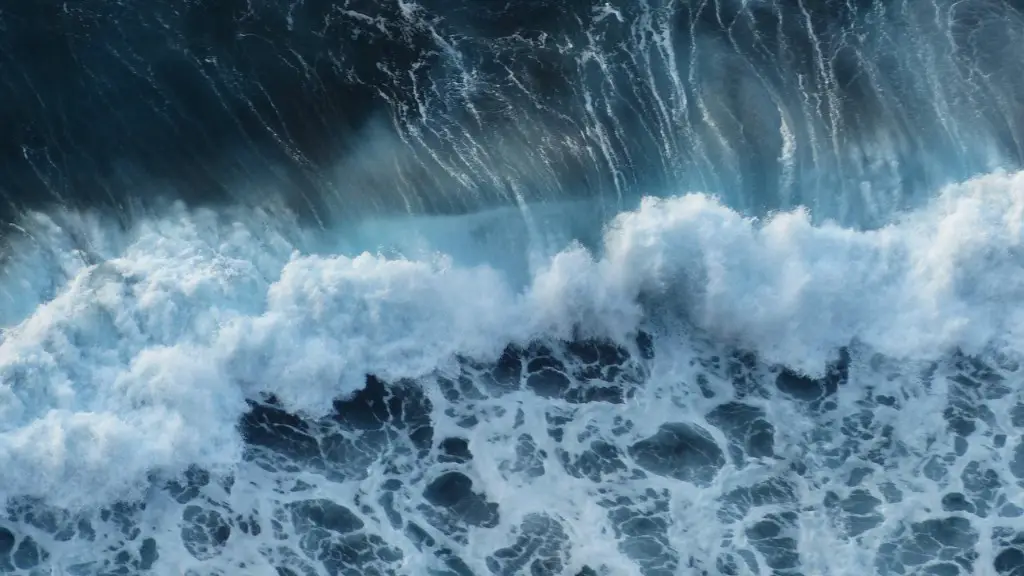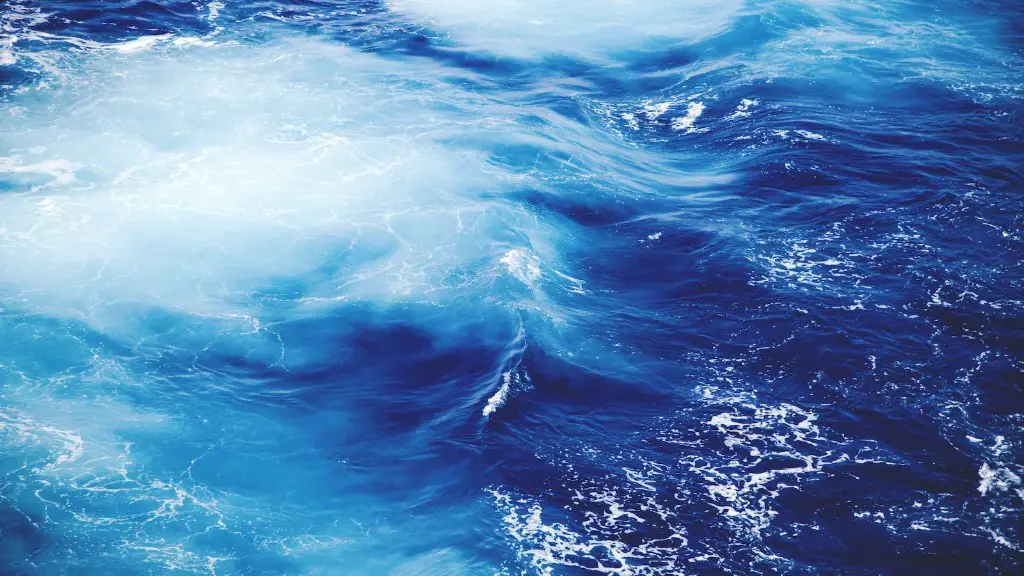The contentious international issue of the South China Sea is reason for plenty of debate. Although nations such as the Philippines, China, and Vietnam are disputing their rights and claims of ownership, the issue is far from being resolved. Decades of conflict, oil-exploration, large naval activities, and a myriad of overlapping claims all paint a complex picture that needs to be understand to comprehend its significance.
The South China Sea is a seaway in the western part of the Pacific Ocean, leading to both Indonesia and the Philippines, and includes two major parts: the Gulf of Tonkin to the east and the Gulf of Thailand to the west. This strategic waterway is a highly valuable route for transporting goods and people, and its rich resources of oil and gas make it desirable for economic exploitation. It is also home to a rich biodiverse species, and provides important ecological resources for the countries bordering it.
One particular point of contention is the status of the South China Sea as international waters. It remains ambiguous if the South China Sea constitute an international strait or a series of individual exclusives maritime zones (EEZ). It’s important to consider the implications of the United Nations Convention on the Law of the Sea (Unclos) and its status as international waters. Unclos provides a framework as to how the seas and oceans should be used, regulated, and managed. Accordingly, this would ultimately determine the South China Sea’s status as an international waterway.
However, the question of the South China Sea’s status is complex and controversial. Different interpretations can be applied to the same text – something resembling the play of Kremlinologists piecing together fragmentary clues when interpreting the past during the Cold War. Unclos is regarded by many as settling the matter as to its status, though internal politics, nationalism and ambition widely complicate its interpretation.
The claims brought forward by the nations contesting the South China Sea greatly vary and this has been the source of continued conflict for years. Some are seeking exclusive economic rights for exploiting the resources within their claim. China holds the position that the South China Sea is internal waters, where the other claimants regard them as international waters. The dispute has grown to encompass both security and control of several disputed islands, but also violations of territorial waters and fishermen’s rights to operate in the area.
Overall, a legal framework must be established which offers freedom of navigation and commercial access. The international community, represented by the United Nations, should provide clear guidelines that offer a fair and viable resolution, reinforced by collective action. If both parties continue to disagree, then the International Court of Justice is a logical and successful avenue of resolution. Finding such a solution is in everyone’s interest and would prove beneficial to the countries involved.
Current Governance
The current disagreement between the countries surrounding the South China Sea is correlative to the government’s current governance. As of now, each country holds a vastly different authority and power of control, meaning that the rules for using the sea vary for each nation. To demonstrate this, Malaysia, Brunei, and the Philippines hold exclusive economic rights in the waters of their claims. Additionally, China has declared that fishing in the South China Sea is prohibited, whereas most other countries have open access for fishing in their claims.
Moreover, the problems concerning the status of the South China Sea are further entailed with other issues, such as mineral resources and security. In 2008 the Chinese government stated that nine-dash line, which encompasses most of the sea’s areas, is the base of their territorial claims. As a result, China has increasingly sought to make these claims a reality, and construct military bases, artificial islands, and oil rigs as a form of governance.
The nine-dash line gives China vast control of the South China Sea, and places the other involved parties in a difficult spot. The Philippines and Vietnam have criticised this line, largely due to the way it encumbers their own claimed areas. When addressing the difficulties positioning themselves, Malaysia and Brunei have embraced a more neutral stance due to the fact that their exclusive economic zones are relatively small and are not in danger of being reduced.
Unresolved Disputes
Although Unclos has in many respects furnished a comprehensive framework for dispute resolution, the overlapping claims by China, India, the Philippines, Vietnam, and Taiwan all remain unresolved. Thus, there is clearly a need for a diplomatic solution that would be accepted by all of the nations. The arbitral award issued by the Permanent Court of Arbitration in The Hague in 2016 plainly stated China’s nine-dash line was invalid and China’s behaviour in the South China Sea a violation of the Unclos agreement.
Whenever it comes to territorial issues, nations become sensitive and determined to maintain their position no matter what. This, and the contrasting views amongst certain countries, cause the situation to stay unsolved and unilateral action may threaten regional peace and stability. Consequently, while many countries might be open to freely sharing the South China Sea, it is also a matter of great significance to their national interests.
However, nations surrounding the South China Sea attempt to find various ways to cooperate and negotiate over the issue. One example is ASEAN and China have created a code of conduct to agree on the framework for the rules of behaviour in the South China Sea. While their efforts are understandable, such initiatives are insufficient and might even lead to further tension in light of certain nations standing firm in their individual claims.
Economic Impact and Developments
The South China Sea is an extremely important waterway due to its potential for economic development and its geographical importance. This explains why nations are investing so much effort defending their claims. On the one hand, it offers appealing economic opportunities and resources that can be tapped into, such as energy and minerals. On the other hand, it is an important corridor for Chinese and world trade, meaning that warships, merchant vessels, and oil rigs must have undisrupted and safe passage.
For this reason, China’s single-minded pursuit of its territorial claims has been criticised. Not only does it violate international law, but it could lead to a false understanding of territorial waters, multiple interpretations of international laws, and military conflict. This is why, while regulations regarding the South China Sea are of utmost importance, a collective and cooperative resolution is just as prominent.
Increasingly, most nations are keen on developing projects that focus on the economic benefits of the South China Sea. For example, the Malaysian government has launched projects like the Malaysia-China Kuantan Industrial Park to further expand the exploitation of the sea’s potential oil and gas resources. Similarly, China has proposed the joint development of oil access, and Brunei has put plans forward to increase oil production.
Potential Solutions
One possible solution for the South China Sea disputes is for all nations to coordinate maritime transportation and resources. This would mean that all countries would cooperate in allowing resource access, instead of attempting to create exclusive claims to resources by separate countries. There could also be investment in local production and research into the long-term sustainability of the resources, such as oil and gas exploration.
The development of the stated initiatives could be done in such a way that is beneficial for all countries involved. This would involve a collective effort and require a trust-building process where countries learn to cooperate and rely on one another. Foreign investments in developing projects that facilitate the efficient movement of goods could also play a major part in reducing conflicts by ensuring safety and prosperity.
In tandem, it is necessary to create and maintain a shared understanding of the rules and regulations regarding the South China Sea. This is a key factor if the involved countries are going to come to a resolution and increase the security of the region. On a global scale, this means that the laws under Unclos must be understood by all nations, so that their individual claims remain protected.
International Community
The international community has a responsibility to intervene in the disputes to ensure peace and security as well as freedom of navigation. For example, the United Nations should provide clear diplomatic guidelines on the situation and press for a peaceful resolution. It could also investigate weaker solutions such as bilateral treaties, fisheries management and finally arbitration to determine exclusive economic zones.
Furthermore, the United States and other World powers have an obligation to step in and provide their own diplomatic solutions. This could mean that a public statement is issued, or for these countries to openly opposed China’s nine-dash line as simply as means of enforcing Unclos. In the end, the former two solutions should prove to be the most favourable.
The dispute between the South China Sea’s bordering nations remains heavily disputable and has been a contentious issue for some time. The overlapping legal claims and high-stakes interests at stake are difficult to solve due to their sheer scale and complexity. However, it is only through enduring and patient dialogue that a mutual resolution can be made. This process should be driven by understanding the interests and positions of each involved party and the need to accept shared responsibility within the international community.
Prevention and Risk Management
The United Nations should provide a clear approach when it comes to preventing a breaking out of conflict. This could mean that the UN could use its influence to influence the behaviour of each side, or to remain impartial and encourage the parties to focus on their internal responsibilities. The UN could also promote the signing of treaties and ceasefires, or create joint peace initiatives between the most involved countries, to move the situation away from a state of conflict.
In order to manage risks and ensure a peaceful resolution, five key components must be considered: international law, strategic interests, military build-up, national security, and environmental factors. National security must be a priority, as threats and provocations can undermind peaceful solutions and lead to military confrontations. Additionally, environmental factors must be taken into account, as sustainability, conservation, and ecological balance must all be taken into consideration.
In conclusion, a solution for the South China Sea dispute will be difficult to find. This is partly due to the varying positions of the disputing nations and the complexity of the issue. The implications of Unclos must be seen holistically, while the concerns of all parties must be taken into account. There is a need for a collective diplomatic solution that would be satisfactory to all sides and ensure the peace and security of the region.





